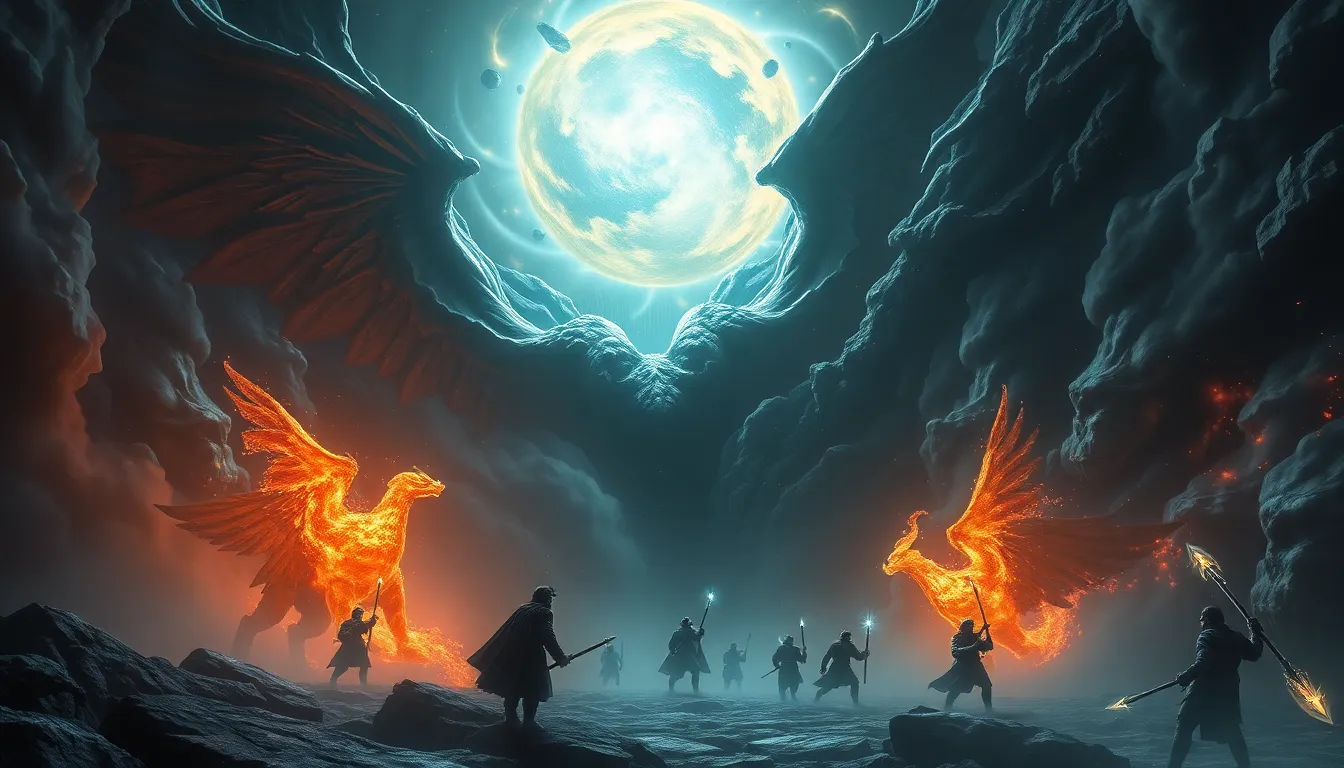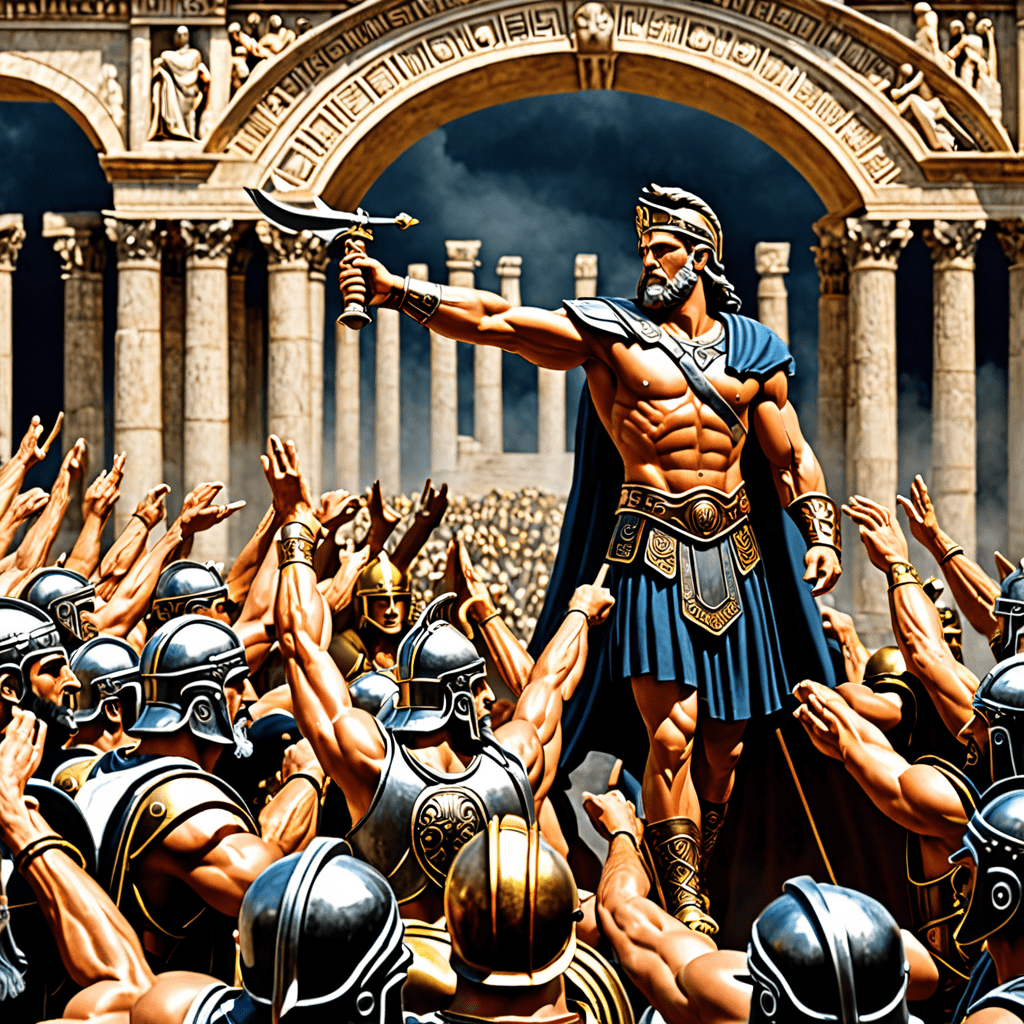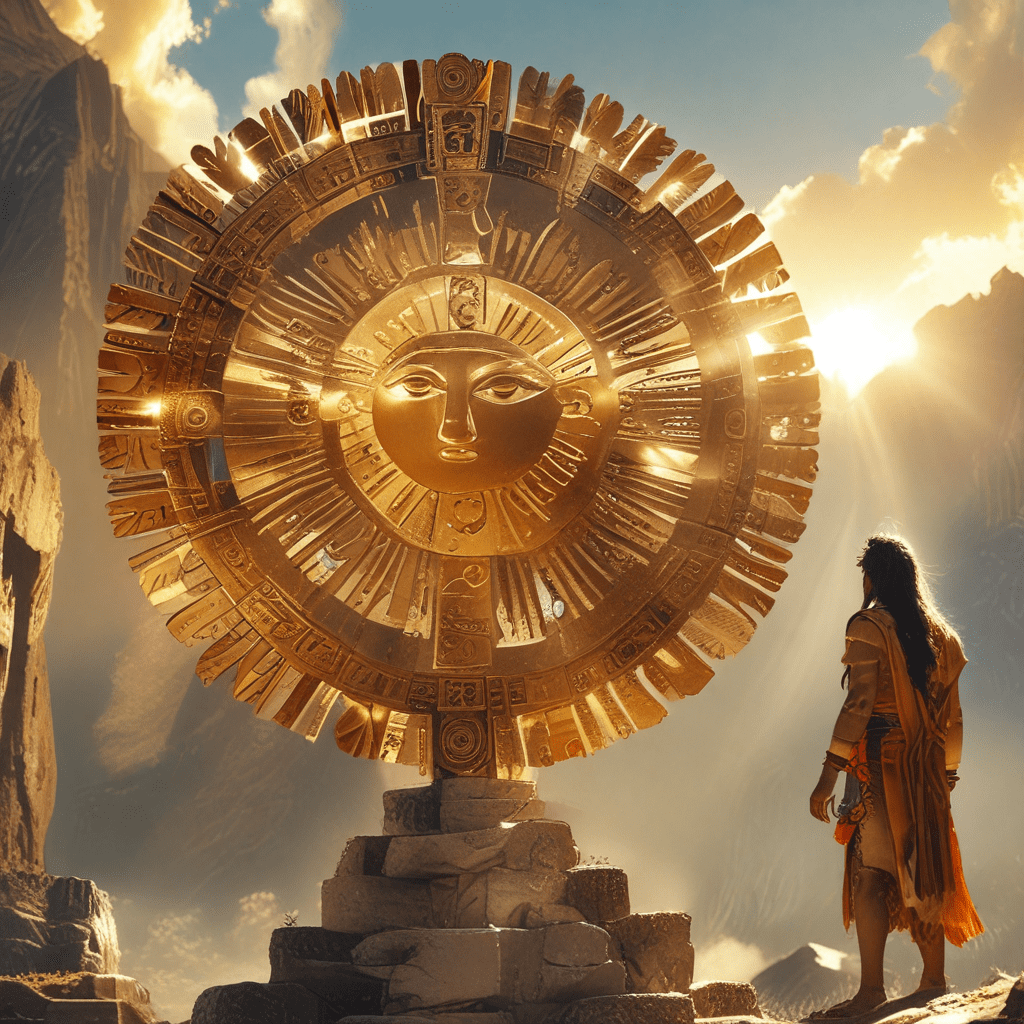The Great Cosmic Conflict: Epic Battles of the Gods
I. Introduction to the Cosmic Conflict
Cosmic conflicts are grand narratives found within various mythologies that depict epic battles between gods, titans, and other celestial beings. These conflicts are significant not only for their dramatic flair but also for the moral and philosophical lessons they impart to humanity. They often reflect the struggles between good and evil, chaos and order, and the human condition.
Throughout history, numerous pantheons have been involved in these cosmic battles, each contributing unique stories and characters. From the Greek gods clashing with the Titans to the Norse deities facing their doom during Ragnarok, these tales resonate with themes that transcend cultures and time periods.
This article aims to explore these epic battles, examining their implications for the cultures that created them and the universal truths they communicate about existence and morality.
II. The Pantheons at War
A. Greek Gods vs. Titans: The Clash of Generations
1. Background of the Titanomachy
The Titanomachy is one of the most significant battles in Greek mythology, representing the struggle between the Olympian gods, led by Zeus, and the Titans, who were the elder gods. This conflict arose from the Titans’ rule over the cosmos, which was challenged by the new generation seeking to establish a new order.
2. Key battles and characters
- Zeus: The leader of the Olympians who wielded thunderbolts as his weapon.
- Cronus: The leader of the Titans, who was overthrown by his son Zeus.
- Prometheus: A Titan who sided with the Olympians, embodying the theme of rebellion against tyranny.
B. Norse Gods: Ragnarok and the Final Battle
1. Prophecies leading to Ragnarok
Ragnarok signifies the end of the world in Norse mythology, a series of events that includes a great battle, natural disasters, and the death of many gods. Foretold in the Poetic Edda, it serves as both a conclusion and a new beginning for the cosmos.
2. Major figures and their roles in the conflict
- Odin: The Allfather who sacrifices himself for knowledge and ultimately faces Fenrir.
- Thor: The god of thunder, who battles the serpent Jörmungandr.
- Loki: The trickster god who plays a pivotal role in the chaos of Ragnarok.
III. Egyptian Deities in Conflict
A. The Struggle for Order: Osiris vs. Set
1. The myth of Osiris’ death and rebirth
The conflict between Osiris and Set is a central theme in Egyptian mythology, representing the eternal struggle between order and chaos. Set, the god of chaos, murders his brother Osiris, who symbolizes life and resurrection.
2. The significance of the battle for Ma’at
This battle is crucial for maintaining Ma’at, the principle of order, truth, and justice in the universe. Osiris’ eventual resurrection signifies the triumph of order over chaos, a recurring theme in Egyptian beliefs.
B. Ra’s Eternal Battle Against Chaos
1. The daily struggle against Apep
Ra, the sun god, battles Apep, the serpent of chaos, every night. This ongoing struggle symbolizes the daily cycle of light overcoming darkness.
2. Symbolism of light versus darkness
The conflict embodies the Egyptian belief in the cyclical nature of life, where the victory of light (order) over darkness (chaos) is essential for the continuation of existence.
IV. Hindu Mythology: The Battle for Dharma
A. The Mahabharata: A Cosmic War of Good vs. Evil
1. Overview of the Kurukshetra War
The Mahabharata recounts the epic Kurukshetra War, a monumental conflict between the Pandavas and Kauravas, representing the struggle for dharma (righteousness). This war is not just a physical battle but a moral one, with deep philosophical implications.
2. Key divine interventions by Krishna
Krishna, an incarnation of the god Vishnu, plays a crucial role in guiding the Pandavas, offering wisdom and support. His teachings in the Bhagavad Gita highlight the importance of duty and righteousness in the face of overwhelming odds.
B. The Churning of the Ocean: Creation through Conflict
1. The significance of Samudra Manthan
The myth of the Churning of the Ocean (Samudra Manthan) illustrates how conflict can lead to creation. The gods and demons worked together to churn the ocean to obtain the nectar of immortality.
2. The emergence of divine treasures and beings
This event produced numerous treasures, including the goddess Lakshmi and the poison that threatened to destroy the world, showcasing how conflict can lead to both creation and destruction.
V. The Role of Lesser Deities and Spirits
A. The influence of minor gods and spirits in major conflicts
While major deities often dominate the narratives, lesser gods and spirits play vital roles in shaping the outcomes of cosmic battles. Their influence can shift the balance of power in significant ways.
B. Case studies: Naiads, Nymphs, and other nature spirits
In various mythologies, nature spirits like naiads and nymphs have intervened in mortal affairs, offering aid or presenting obstacles to the gods. Their roles often highlight the interconnectedness of all beings within the mythological framework.
C. How these beings shift the balance of power
- Minor deities can represent aspects of nature, fate, or fortune.
- They often embody the consequences of the gods’ actions, illustrating the complexity of cosmic balance.
VI. Cosmic Battles in Non-Western Mythologies
A. The African Pantheon: Anansi and the Trickster’s Battles
Anansi, the spider god of stories, represents the trickster archetype in African mythology. His battles often involve cunning and wit rather than brute strength, emphasizing intelligence as a tool in cosmic conflicts.
B. The Aztec Wars: Quetzalcoatl vs. Tezcatlipoca
The Aztec mythological narrative features the conflict between Quetzalcoatl, the feathered serpent god of creation, and Tezcatlipoca, the god of darkness. Their battles represent the duality of creation and destruction.
C. Native American Legends: The Great Spirit’s Struggle
In various Native American cultures, the Great Spirit is often depicted as engaging in battles that embody the struggle for balance within nature, reflecting the importance of harmony and respect for the earth.
VII. Symbolism and Themes in Cosmic Conflicts
A. Good vs. Evil: The moral narratives
Many cosmic battles center around the theme of good versus evil, serving as moral tales that guide human behavior and societal norms.
B. Chaos vs. Order: The fundamental battle for existence
The struggle between chaos and order is a recurring theme in cosmic conflicts, symbolizing the balance required for the universe to function harmoniously.
C. Sacrifice and Redemption: Key lessons from the conflicts
Many narratives emphasize the importance of sacrifice, illustrating how the ultimate redemption often comes at a great cost, a lesson that resonates throughout various cultures.
VIII. Cultural Impact of Epic Battles
Epic battles of the gods have left a profound impact on art, literature, and cultural identity across the globe. These stories not only entertain but also educate, providing frameworks for understanding morality, justice, and the human experience.
As we explore these mythological conflicts, we find that they are more than mere stories; they are reflections of our deepest fears, hopes, and the eternal quest for meaning in a chaotic universe.



